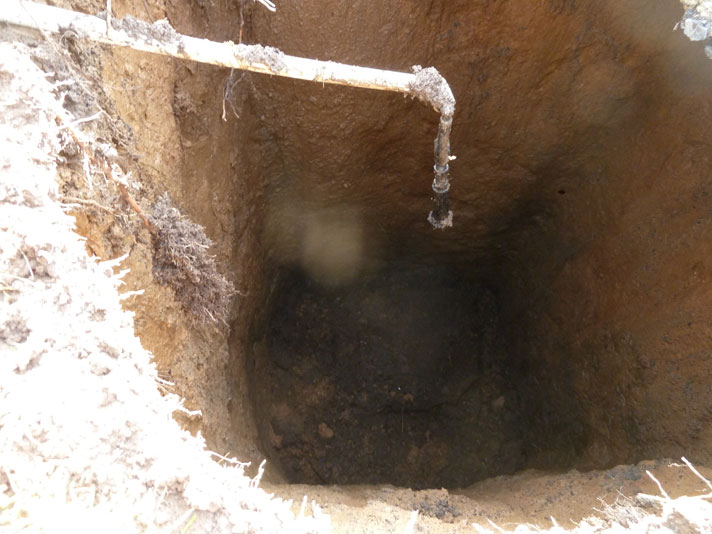Digging Jacksonville – November 2017
We all know that the history of the city of Jacksonville is intimately tied to the discovery of gold. So it’s not surprising that the city is home to many of the same myths and legends surrounding the gold rush that are found across the west. Most commonly, it’s the myth of the “Chinese tunnels.” Unlike many other areas where these myths are pervasive, Jacksonville actually is undermined by a maze of historic tunnels, and not just abandoned sidewalk vaults which are usually the origin of such tales. I have seen several, and you only have to do a short Google search to read about the sinkholes and collapsed tunnels that have occurred over the years. Most notably, several have been seen around the Jacksonville Library, (check-out the great interpretive sign describing past mining in the area next time you are there) but they are actually located all over town.
First, some mining terminology: A Tunnel is an underground passageway. An Adit is a horizontal tunnel, and a Shaft is a vertical entry passage used for access or to haul goods into our out of a mine. The dirt excavated to create these underground passageways was hauled up and panned for gold using whatever nearby water source was available. Sometimes old mining sites were reworked, sometimes new ones were created.
So, where did these tunnels come from? The majority of the adits and shafts under Jacksonville today were excavated during the local wave of Depression Era mining—long after Chinese miners had left the area. One such miner was ‘Blackie’ Wilson who lived in the old train depot (now the Chamber of Commerce Visitor Center). Long time Jacksonville resident Louis Applebaker recalled that Blackie would knock on doors in town and offer residents 10% of the gold if they let him dig a hole on their property. Other local accounts suggest that these holes would sometimes venture under the homes of unsuspecting neighbors, who could hear mysterious voices coming from under their homes. The miners were quite daring with their excavations, and the landowners and city officials were rather accommodating, as the thick “hardpan” layer under the town and above the bedrock was believed to provide the needed stability to support the buildings above.
In the last few decades, these mining features have begun to collapse. Sometimes the support timbers have rotted away, and sometimes buried water lines have burst and eroded the soil above the tunnels. Most of the backyard shafts were backfilled after World War II, but it is unclear what the methodology was—if there was one—for filling the mine shafts was at the time.
When these historic tunnels are exposed, they are impressive (and a bit terrifying). They could range from a small hole to a six-foot-wide shaft running twenty feet deep. Today, these unique features represent archaeological sites that can help us learn about the past, and the ways in which residents have used ingenuity and some elbow grease to literally carve out a living during hard times.
Want to get a look at some of historic mine shafts? Head on up to the Jacksonville Woodlands trail system where you can get a firsthand view of Jacksonville’s Depression Era mining past! Think you might have a collapsing shaft or tunnel on your property? Treat the site with caution and contact the City of Jacksonville Public Works team to have them take a look. Be sure to get pictures and document the site, so we can keep track of these important resources!
Featured image: This mine shaft was exposed under a sidewalk on the east side of town a few years back. It measured 4’ wide by roughly 10’ deep before it was filled-in by the City of Jacksonville, Oregon.

 Chelsea Rose is an historical archaeologist who specializes in the settlement and development of the American West. Chelsea and the Southern Oregon University Laboratory of Anthropology (SOULA) conduct archaeology across Oregon and have done several projects in Jacksonville. You can reach Chelsea at rosec@sou.edu and follow SOULA on
Chelsea Rose is an historical archaeologist who specializes in the settlement and development of the American West. Chelsea and the Southern Oregon University Laboratory of Anthropology (SOULA) conduct archaeology across Oregon and have done several projects in Jacksonville. You can reach Chelsea at rosec@sou.edu and follow SOULA on